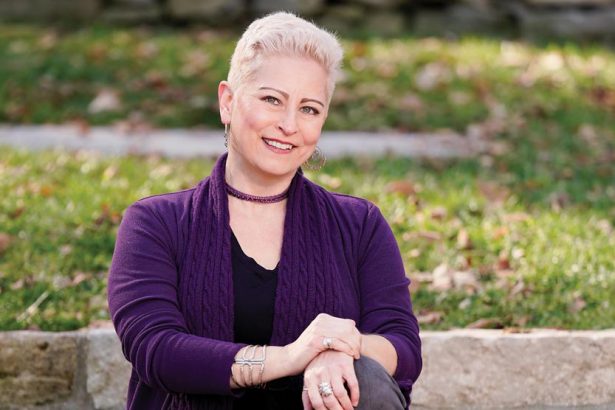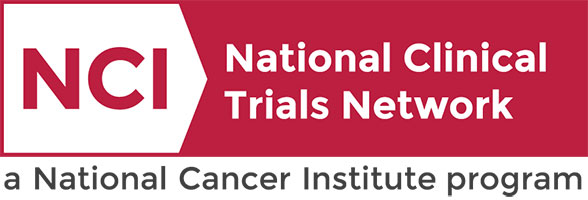Patient Search
 |
 |
|
KaCrole Higgins was diagnosed with breast cancer in 2020. “In May 2020, I found a lump in my breast. I cried. By June, it was diagnosed as breast cancer, triple positive, stage 1A. While getting this cancer diagnosis was devastating, it also became an opportunity. Suddenly, the cancer gave me clarity. It gave me clarity about what was important, what was good in my life, what was toxic in my life, and what I needed to do.” Click below to read more of KaCrole’s story |
If Landon Ryan had been diagnosed with bilateral retinoblastoma 10, 20 or 30 years ago, she might not be here today with nearly perfect vision.Thanks to recent improvements in the treatment for this rare form of cancer that almost exclusively affects children under the age of 5, the diagnosis had the power to change Landon’s life when she was 11 months old, but not to take it — or her eyesight. Click below to learn more about Landon and her story. https://momentum.vicc.org/2022/04/brighter-outlook/ |
Chemotherapy for the Treatment of Patients with Newly Diagnosed Very Low-Risk and Low Risk Fusion Negative Rhabdomyosarcoma
Pediatrics
Pediatrics
Rhabdomyosarcoma is a type of cancer that occurs in the soft tissues in the body. This phase III trial aims to maintain excellent outcomes in patients with very low risk rhabdomyosarcoma (VLR-RMS) while decreasing the burden of therapy using treatment with 24 weeks of vincristine and dactinomycin (VA) and examines the use of centralized molecular risk stratification in the treatment of rhabdomyosarcoma. Another aim of the study it to find out how well patients with low risk rhabdomyosarcoma (LR-RMS) respond to standard chemotherapy when patients with VLR-RMS and patients who have rhabdomyosarcoma with DNA mutations get separate treatment. Finally, this study examines the effect of therapy intensification in patients who have RMS cancer with DNA mutations to see if their outcomes can be improved.
Pediatrics
III
Borinstein, Scott
NCT05304585
COGARST2032
Testing the use of Ado-Trastuzumab Emtansine Compared to the Usual Treatment (Chemotherapy with Docetaxel plus Trastuzumab) for Recurrent, Metastatic, or Unresectable HER2-Positive Salivary Gland Cancer
Head/Neck
Head/Neck
This phase II trial compares the effect of usual treatment of docetaxel chemotherapy plus trastuzumab, to ado-emtansine (T-DM1) in patients with HER2-positive salivary gland cancer that has come back (recurrent), that has spread from where it first started (primary site) to other places in the body, or cannot be removed by surgery (unresectable). Trastuzumab is a form of targeted therapy because it works by attaching itself to specific molecules (receptors) on the surface of cancer cells, known as HER2 receptors. When trastuzumab attaches to HER2 receptors, the signals that tell the cells to grow are blocked and the cancer cell may be marked for destruction by body's immune system. Trastuzumab emtansine contains trastuzumab, linked to a chemotherapy drug called emtansine. Trastuzumab attaches to HER2 positive cancer cells in a targeted way and delivers emtansine to kill them. Docetaxel is in a class of medications called taxanes. It stops cancer cells from growing and dividing and may kill them. Trastuzumab emtansine may work better compared to usual treatment of chemotherapy with docetaxel and trastuzumab in treating patients with recurrent, metastatic or unresectable salivary gland cancer.
Head/Neck
II
Choe, Jennifer
NCT05408845
NRGHN010
Testing What Happens When an Immunotherapy Drug (Pembrolizumab) is Given by Itself Compared to the Usual Treatment of Chemotherapy with Radiation after Surgery for Recurrent Head and Neck Squamous Cell Carcinoma
Head/Neck
Head/Neck
This phase II trial studies the effect of pembrolizumab alone compared to the usual approach (chemotherapy [cisplatin and carboplatin] plus radiation therapy) after surgery in treating patients with head and neck squamous cell carcinoma that has come back (recurrent) or patients with a second head and neck cancer that is not from metastasis (primary). Radiation therapy uses high energy radiation or protons to kill tumor cells and shrink tumors. Cisplatin is in a class of medications known as platinum-containing compounds. It works by killing, stopping or slowing the growth of cancer cells. Carboplatin is also in a class of medications known as platinum-containing compounds. It works in a way similar to the anticancer drug cisplatin, but may be better tolerated than cisplatin. Carboplatin works by killing, stopping or slowing the growth of cancer cells. Immunotherapy with monoclonal antibodies, such as pembrolizumab, may help the body's immune system attack the cancer and may interfere with the ability of tumor cells to grow and spread. Giving pembrolizumab alone after surgery may work better than the usual approach in shrinking recurrent or primary head and neck squamous cell carcinoma.
Head/Neck
II
Choe, Jennifer
NCT04671667
ECOGHNEA3191
Testing the Addition of Total Ablative Therapy to Usual Systemic Therapy Treatment for Limited Metastatic Colorectal Cancer, ERASur Trial
This phase III trial compares the addition of total ablative therapy to the usual systemic therapy versus the usual systemic therapy alone in treating patients with advanced colorectal cancer that has spread to up to 4 body sites (limited metastatic). The usual approach for patients who are not participating in a study is treatment with intravenous (through a vein) and/or oral medications (systemic therapy) to help stop the cancer sites from getting larger and the spread of the cancer to additional body sites. The ablative local therapy will consist of very focused, intensive radiotherapy called stereotactic ablative radiotherapy (SABR) with or without surgical resection and/or microwave ablation, which is a procedure where a needle is temporarily inserted in the tumor and heat is used to destroy the cancer cells. The addition of ablative local therapy to the usual approach of systemic therapy could be more effective than usual chemotherapy alone by increasing the life of patients with limited metastatic colorectal cancer.
Not Available
III
Not Available
NCT05673148
VICC-NTGIT23268
A Study of a New Way to Treat Children and Young Adults with a Brain Tumor Called NGGCT
Multiple Cancer Types
This phase II trial studies the best approach to combine chemotherapy and radiation therapy (RT) based on the patients response to induction chemotherapy in patients with non-germinomatous germ cell tumors (NGGCT) that have not spread to other parts of the brain or body (localized). This study has 2 goals: 1) optimizing radiation for patients who respond well to induction chemotherapy to diminish spinal cord relapses, 2) utilizing higher dose chemotherapy followed by conventional RT in patients who did not respond to induction chemotherapy. Chemotherapy drugs, such as carboplatin, etoposide, ifosfamide, and thiotepa, work in different ways to stop the growth of tumor cells, either by killing the cells, by stopping them from dividing, or by stopping them from spreading. Radiation therapy uses high energy x-rays or high-energy protons to kill tumor cells and shrink tumors. Studies have shown that patients with newly-diagnosed localized NGGCT, whose disease responds well to chemotherapy before receiving radiation therapy, are more likely to be free of the disease for a longer time than are patients for whom the chemotherapy does not efficiently eliminate or reduce the size of the tumor. The purpose of this study is to see how well the tumors respond to induction chemotherapy to decide what treatment to give next. Some patients will be given RT to the spine and a portion of the brain. Others will be given high dose chemotherapy and a stem cell transplant before RT to the whole brain and spine. Giving treatment based on the response to induction chemotherapy may lower the side effects of radiation in some patients and adjust the therapy to a more efficient one for other patients with localized NGGCT.
Germ Cell (Pediatrics),
Pediatrics
II
Esbenshade, Adam
NCT04684368
COGACNS2021
Testing the Effectiveness of Two Immunotherapy Drugs (Nivolumab and Ipilimumab) with One Anti-cancer Targeted Drug (Cabozantinib) for Rare Genitourinary Tumors
Multiple Cancer Types
This phase II trial studies how well cabozantinib works in combination with nivolumab and ipilimumab in treating patients with rare genitourinary (GU) tumors that that has spread from where it first started (primary site) to other places in the body. Cabozantinib may stop the growth of tumor cells by blocking some of the enzymes needed for cell growth. Immunotherapy with monoclonal antibodies, such as nivolumab and ipilimumab, may help the body's immune system attack the cancer, and may interfere with the ability of tumor cells to grow and spread. Giving cabozantinib, nivolumab, and ipilimumab may work better in treating patients with genitourinary tumors that have no treatment options compared to giving cabozantinib, nivolumab, or ipilimumab alone.
Bladder,
Kidney (Renal Cell),
Rectal
II
Tan, Alan
NCT03866382
ALLIANCEUROA031702
Thoracotomy Versus Thoracoscopic Management of Pulmonary Metastases in Patients with Osteosarcoma
Multiple Cancer Types
This phase III trial compares the effect of open thoracic surgery (thoracotomy) to thoracoscopic surgery (video-assisted thoracoscopic surgery or VATS) in treating patients with osteosarcoma that has spread to the lung (pulmonary metastases). Open thoracic surgery is a type of surgery done through a single larger incision (like a large cut) that goes between the ribs, opens up the chest, and removes the cancer. Thoracoscopy is a type of chest surgery where the doctor makes several small incisions and uses a small camera to help with removing the cancer. This trial is being done evaluate the two different surgery methods for patients with osteosarcoma that has spread to the lung to find out which is better.
Pediatrics,
Sarcoma
III
Borinstein, Scott
NCT05235165
COGAOST2031
A Study of Combination Chemotherapy for Patients with Newly Diagnosed DAWT and Relapsed FHWT
Multiple Cancer Types
This phase II trial studies how well combination chemotherapy works in treating patients with newly diagnosed stage II-IV diffuse anaplastic Wilms tumors (DAWT) or favorable histology Wilms tumors (FHWT) that have come back (relapsed). Drugs used in chemotherapy regimens such as UH-3 (vincristine, doxorubicin, cyclophosphamide, carboplatin, etoposide, and irinotecan) and ICE/Cyclo/Topo (ifosfamide, carboplatin, etoposide, cyclophosphamide, and topotecan) work in different ways to stop the growth of tumor cells, either by killing the cells, by stopping them from dividing, or by stopping them from spreading. This trial may help doctors find out what effects, good and/or bad, regimen UH-3 has on patients with newly diagnosed DAWT and standard risk relapsed FHWT (those treated with only 2 drugs for the initial WT) and regimen ICE/Cyclo/Topo has on patients with high and very high risk relapsed FHWT (those treated with 3 or more drugs for the initial WT).
Pediatrics,
Wilms / Other Kidney (Pediatrics)
II
Benedetti, Daniel
NCT04322318
COGAREN1921
A Study to Compare Standard Chemotherapy to Therapy with CPX-351 and/or Gilteritinib for Patients with Newly Diagnosed AML with or without FLT3 Mutations
This phase III trial compares standard chemotherapy to therapy with liposome-encapsulated daunorubicin-cytarabine (CPX-351) and/or gilteritinib for patients with newly diagnosed acute myeloid leukemia with or without FLT3 mutations. Drugs used in chemotherapy, such as daunorubicin, cytarabine, and gemtuzumab ozogamicin, work in different ways to stop the growth of cancer cells, either by killing the cells, by stopping them from dividing, or by stopping them from spreading. CPX-351 is made up of daunorubicin and cytarabine and is made in a way that makes the drugs stay in the bone marrow longer and could be less likely to cause heart problems than traditional anthracycline drugs, a common class of chemotherapy drug. Some acute myeloid leukemia patients have an abnormality in the structure of a gene called FLT3. Genes are pieces of DNA (molecules that carry instructions for development, functioning, growth and reproduction) inside each cell that tell the cell what to do and when to grow and divide. FLT3 plays an important role in the normal making of blood cells. This gene can have permanent changes that cause it to function abnormally by making cancer cells grow. Gilteritinib may block the abnormal function of the FLT3 gene that makes cancer cells grow. The overall goals of this study are, 1) to compare the effects, good and/or bad, of CPX-351 with daunorubicin and cytarabine on people with newly diagnosed AML to find out which is better, 2) to study the effects, good and/or bad, of adding gilteritinib to AML therapy for patients with high amounts of FLT3/ITD or other FLT3 mutations and 3) to study changes in heart function during and after treatment for AML. Giving CPX-351 and/or gilteritinib with standard chemotherapy may work better in treating patients with acute myeloid leukemia compared to standard chemotherapy alone.
Not Available
III
Not Available
NCT04293562
COGAAML1831
A Study to Compare Standard Therapy to Treat Hodgkin Lymphoma to the Use of Two Drugs, Brentuximab Vedotin and Nivolumab
Multiple Cancer Types
This phase III trial compares the effect of adding immunotherapy (brentuximab vedotin and nivolumab) to standard treatment (chemotherapy with or without radiation) to the standard treatment alone in improving survival in patients with stage I and II classical Hodgkin lymphoma. Brentuximab vedotin is in a class of medications called antibody-drug conjugates. It is made of a monoclonal antibody called brentuximab that is linked to a cytotoxic agent called vedotin. Brentuximab attaches to CD30 positive lymphoma cells in a targeted way and delivers vedotin to kill them. A monoclonal antibody is a type of protein that can bind to certain targets in the body, such as molecules that cause the body to make an immune response (antigens). Immunotherapy with monoclonal antibodies, such as nivolumab, may help the body's immune system attack the cancer, and may interfere with the ability of tumor cells to grow and spread. Chemotherapy drugs such as doxorubicin hydrochloride, bleomycin sulfate, vinblastine sulfate, dacarbazine, and procarbazine hydrochloride work in different ways to stop the growth of cancer cells, either by killing the cells, by stopping them from dividing, or by stopping them from spreading. Cyclophosphamide is in a class of medications called alkylating agents. It works by damaging the cells deoxyribonucleic acid (DNA) and may kill cancer cells. It may also lower the bodys immune response. Etoposide is in a class of medications known as podophyllotoxin derivatives. It blocks a certain enzyme needed for cell division and DNA repair and may kill cancer cells. Vincristine is in a class of medications called vinca alkaloids. It works by stopping cancer cells from growing and dividing and may kill them. Prednisone is in a class of medications called corticosteroids. It is used to reduce inflammation and lower the body's immune response to help lessen the side effects of chemotherapy drugs. Radiation therapy uses high energy x-rays to kill tumor cells and shrink tumors. Adding immunotherapy to the standard treatment of chemotherapy with or without radiation may increase survival and/or fewer short-term or long-term side effects in patients with classical Hodgkin lymphoma compared to the standard treatment alone.
Pediatric Lymphoma,
Pediatrics
III
Smith, Christine
NCT05675410
VICC-NTPED23306


